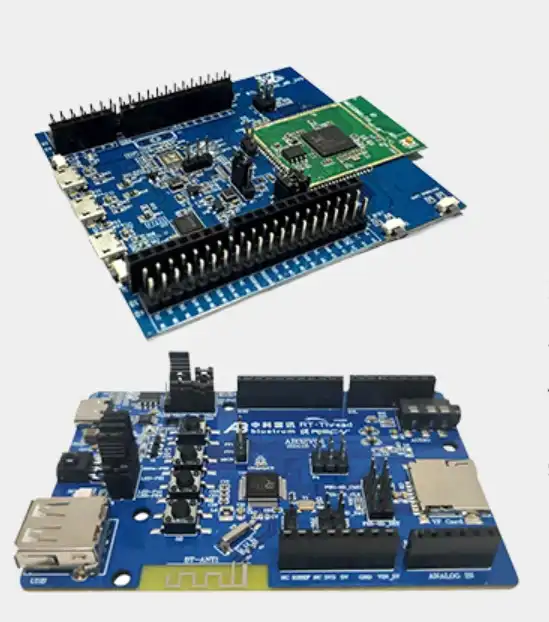Key Standards Governing Communication PCBA Design
Communication PCBA (Printed Circuit Board Assembly) design is governed by a complex set of standards that ensure reliability, performance, and interoperability. These standards encompass various aspects, including electromagnetic compatibility (EMC), signal integrity, thermal management, and environmental compliance. Key organizations such as the IPC (Institute for Printed Circuits), IEEE (Institute of Electrical and Electronics Engineers), and JEDEC (Joint Electron Device Engineering Council) play crucial roles in developing and maintaining these standards. Adherence to these guidelines is essential for creating robust communication PCBAs that meet industry requirements and regulatory specifications.

Critical Design Considerations for Communication PCBAs
Signal Integrity and Electromagnetic Compatibility
When designing Communication PCBAs, signal integrity and electromagnetic compatibility are paramount concerns. These factors directly impact the performance and reliability of communication systems. Signal integrity ensures that data transmitted through the PCBA remains uncorrupted, while EMC prevents interference with other electronic devices.
To achieve optimal signal integrity, designers must carefully consider trace routing, impedance matching, and crosstalk mitigation. Proper stackup design and controlled impedance traces are essential for maintaining signal quality, especially in high-speed communication applications. Additionally, implementing techniques such as differential signaling and proper ground plane design can significantly enhance signal integrity.
Electromagnetic compatibility is equally crucial in Communication PCBA design. Shielding, proper component placement, and effective grounding strategies are vital for minimizing electromagnetic interference (EMI) and ensuring compliance with regulatory standards. Designers often employ techniques like guard traces, split planes, and ferrite beads to suppress EMI and enhance the overall EMC performance of the PCBA.
Thermal Management and Reliability
Communication PCBAs often operate in challenging environments and must maintain reliability under various conditions. Effective thermal management is critical to prevent component failure and ensure long-term performance. Designers must consider factors such as power dissipation, component placement, and cooling strategies to maintain optimal operating temperatures.
Heat dissipation techniques, such as the use of thermal vias, copper pours, and heat sinks, play a vital role in managing temperature. Advanced thermal simulation tools can help designers identify potential hotspots and optimize the PCBA layout for improved heat distribution. Moreover, selecting components with appropriate thermal ratings and implementing proper airflow management are essential for maintaining reliability.
Reliability testing, including thermal cycling, vibration testing, and accelerated life testing, is crucial for validating the robustness of Communication PCBAs. These tests help identify potential failure modes and ensure that the assemblies can withstand the rigors of their intended applications, from mobile devices to base station equipment.
Compliance with Industry Standards and Regulations
Communication PCBA design must adhere to a wide array of industry standards and regulations to ensure interoperability, safety, and environmental compliance. These standards cover various aspects of design, manufacturing, and testing, and are essential for creating PCBAs that meet global requirements.
IPC standards, such as IPC-2221 for generic PCB design and IPC-6012 for rigid PCB qualification, provide crucial guidelines for Communication PCBA development. These standards cover aspects like material selection, design rules, and quality assurance processes. Adherence to these standards ensures that PCBAs meet industry-accepted quality and reliability benchmarks.
Environmental compliance is another critical consideration in Communication PCBA design. Regulations such as RoHS (Restriction of Hazardous Substances) and REACH (Registration, Evaluation, Authorization, and Restriction of Chemicals) impose strict requirements on material selection and manufacturing processes. Designers must carefully choose components and materials that comply with these regulations to ensure global marketability and environmental responsibility.
Advanced Technologies in Communication PCBA Design
High-Density Interconnect (HDI) and Microvias
As communication devices continue to shrink in size while increasing in functionality, High-Density Interconnect (HDI) technology has become indispensable in Communication PCBA design. HDI allows for higher component density, improved signal integrity, and enhanced electrical performance in a compact form factor.
Microvias, a key feature of HDI technology, enable complex routing schemes and improved layer-to-layer connections. These small, laser-drilled vias facilitate higher routing density and better signal integrity, making them ideal for high-speed communication applications. The implementation of stacked and staggered microvias further enhances the design flexibility and performance of Communication PCBAs.
When incorporating HDI and microvias in Communication PCBA design, designers must consider factors such as aspect ratio, via reliability, and manufacturing capabilities. Proper design rules and close collaboration with PCB manufacturers are essential to ensure the successful implementation of these advanced technologies.
Flexible and Rigid-Flex PCBAs
Flexible and rigid-flex PCBAs are gaining traction in the communication industry due to their ability to conform to unique form factors and withstand mechanical stress. These technologies offer significant advantages in terms of space savings, weight reduction, and improved reliability in dynamic environments.
Designing flexible and rigid-flex Communication PCBAs requires careful consideration of factors such as bend radius, material selection, and layer stackup. Designers must account for the unique challenges posed by flex circuits, including copper fatigue, delamination risks, and maintaining controlled impedance in flexible regions.
The integration of rigid and flexible sections in rigid-flex PCBAs allows for optimal placement of components and connectors while providing the necessary flexibility for compact and ergonomic designs. This technology is particularly valuable in wearable communication devices, foldable smartphones, and other applications where space is at a premium.
5G and mmWave Design Considerations
The advent of 5G and millimeter-wave (mmWave) technologies has introduced new challenges and opportunities in Communication PCBA design. These high-frequency applications require specialized design techniques to ensure signal integrity and minimize losses.
When designing PCBAs for 5G and mmWave applications, material selection becomes critical. Low-loss, high-frequency materials such as PTFE and ceramic-filled hydrocarbon laminates are often employed to minimize signal attenuation. Additionally, careful attention must be paid to impedance control, via design, and antenna integration to optimize performance at these high frequencies.
Electromagnetic simulation tools play a crucial role in 5G and mmWave PCBA design, allowing designers to predict and optimize circuit performance before fabrication. Techniques such as waveguide integration, air cavity resonators, and specialized RF shielding are often employed to enhance the performance of these high-frequency Communication PCBAs.
Future Trends in Communication PCBA Design
Artificial Intelligence and Machine Learning Integration
The integration of Artificial Intelligence (AI) and Machine Learning (ML) capabilities into Communication PCBAs is poised to revolutionize the industry. These technologies enable adaptive communication systems that can optimize performance based on real-time conditions and usage patterns.
Designing Communication PCBAs with AI and ML capabilities requires careful consideration of processing power, memory requirements, and power consumption. Specialized AI accelerator chips and neural network processors are increasingly being incorporated into these designs to enable edge computing and real-time decision-making capabilities.
As AI and ML technologies continue to evolve, Communication PCBA designers must stay abreast of the latest developments and adapt their design methodologies to accommodate these advanced capabilities. This may involve implementing novel architectures, integrating specialized AI hardware, and ensuring sufficient thermal management for these computationally intensive applications.
Internet of Things (IoT) and Edge Computing
The proliferation of IoT devices and the push towards edge computing are significantly impacting Communication PCBA design. These trends necessitate the development of compact, energy-efficient PCBAs capable of processing and transmitting data in real-time.
Designing Communication PCBAs for IoT and edge computing applications requires a focus on power efficiency, connectivity, and security. Low-power design techniques, such as power gating and dynamic voltage scaling, are essential for maximizing battery life in IoT devices. Additionally, integrating multiple wireless connectivity options (e.g., Wi-Fi, Bluetooth, LoRa) on a single PCBA poses unique challenges in terms of antenna design and EMC considerations.
Security is a paramount concern in IoT Communication PCBAs. Designers must incorporate hardware-based security features, such as secure elements and trusted platform modules, to protect sensitive data and prevent unauthorized access. As the IoT ecosystem continues to expand, the ability to design secure, efficient, and reliable Communication PCBAs will be crucial for enabling the next generation of connected devices.
Sustainable and Eco-Friendly Design Practices
As environmental concerns take center stage, sustainable and eco-friendly design practices are becoming increasingly important in Communication PCBA development. This shift towards sustainability encompasses various aspects, from material selection to end-of-life considerations.
Designers are exploring the use of biodegradable and recyclable materials in PCBA construction to reduce environmental impact. Additionally, design for disassembly and recycling is gaining traction, allowing for easier recovery of valuable materials at the end of a product's lifecycle.
Energy efficiency is another key aspect of sustainable Communication PCBA design. Implementing advanced power management techniques and selecting energy-efficient components not only reduces the environmental footprint but also extends battery life in portable devices. As regulations around electronic waste and energy consumption become more stringent, sustainable design practices will play an increasingly crucial role in the development of Communication PCBAs.
Conclusion
The field of Communication PCBA design is rapidly evolving, driven by advancements in technology and changing market demands. From high-speed 5G applications to IoT devices and AI-enabled systems, the challenges and opportunities in this domain are diverse and complex. Designers must stay informed about the latest standards, technologies, and best practices to create innovative and reliable Communication PCBAs.
As we look to the future, the integration of advanced technologies, the push for sustainability, and the need for ever-greater performance will continue to shape the landscape of Communication PCBA design. By embracing these challenges and leveraging cutting-edge design tools and methodologies, engineers can create Communication PCBAs that meet the demands of tomorrow's interconnected world.
Vertical Integration Ensures Quality in Communication PCBA
Ring PCB Technology Co., Limited offers comprehensive one-stop services for Communication PCBA, ensuring excellence at every stage. With 17 years of expertise, we provide full assembly support, including PCB fabrication, component sourcing, SMT assembly, and functional testing. Our expert engineering team optimizes designs to reduce risks and costs, while rigorous quality control measures, including X-ray inspection and AOI testing, guarantee zero-defect delivery. For innovative and reliable Communication PCBA solutions, contact us at [email protected].
References
1. IPC Association Connecting Electronics Industries. (2021). IPC-2221B: Generic Standard on Printed Board Design.
2. IEEE Standards Association. (2020). IEEE 802.11ax-2021: IEEE Standard for Information Technology--Telecommunications and Information Exchange between Systems Local and Metropolitan Area Networks--Specific Requirements Part 11: Wireless LAN Medium Access Control (MAC) and Physical Layer (PHY) Specifications Amendment 1: Enhancements for High-Efficiency WLAN.
3. JEDEC Solid State Technology Association. (2019). JESD22-A104E: Temperature Cycling.
4. Coombs, C. F., & Holden, H. T. (2016). Printed Circuits Handbook (7th ed.). McGraw-Hill Education.
5. Gupta, R., & Shukla, K. K. (2018). Fundamentals of 5G Mobile Networks. John Wiley & Sons.

Welcome to Ring PCB! Share your inquiry, and receive a tailored quotation!

Ring PCB, your trusted partner for PCB & PCBA Full Turnkey Solutions



